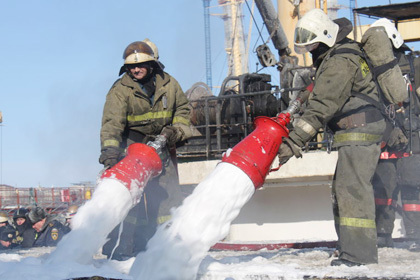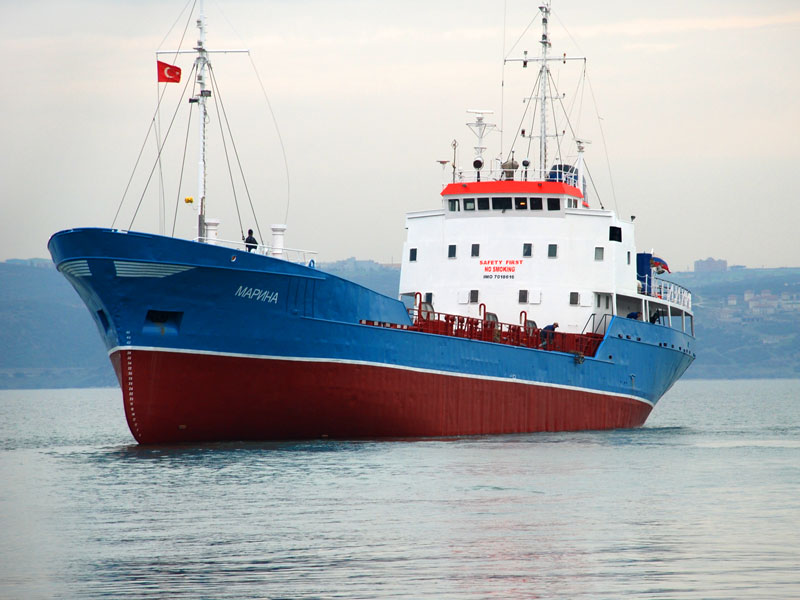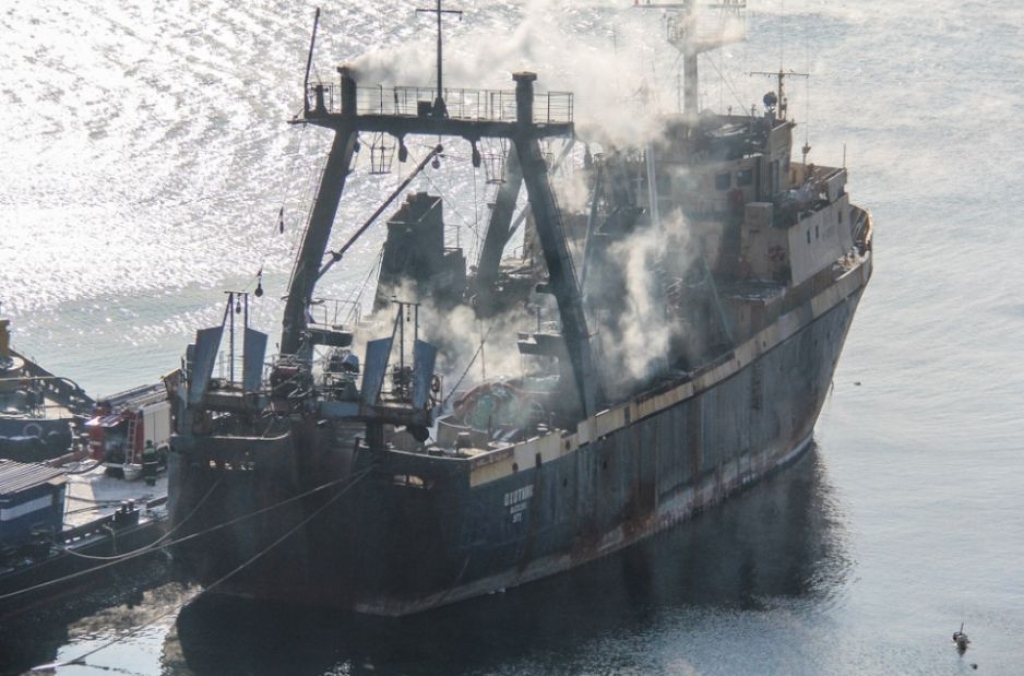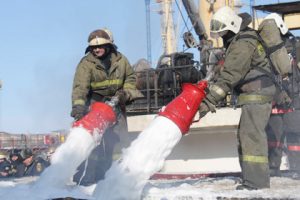How to deal with a fire on a ship
Fighting fires on modern ships requires a special approach and differs from the usual activities. Here, the type and purpose of the vessel, the properties of the cargo, as well as technical and fire-fighting equipment are important. Untimely liquidation of fires far from the berths threatens with human losses and material damage due to the impossibility of quick evacuation.
Principles and rules
The ship's fire safety is the owner's responsibility, but he delegates it to the captain for the duration of the voyage. Each ship must have a fire safety mate and responsibilities among the other crew members are allocated according to their area of work. For example, a senior mechanic ensures safety, monitors the condition and preventive maintenance in the engine room.
The knowledge and cohesion of the ship's crew is very important for quick extinguishing, because the design of any ship assumes the rapid spread of fire through the compartments and cabins. Therefore, in each room of the ship, stationary fire extinguishing systems are installed that meet certain requirements.
 In addition, all crew members must clearly know the sequence of actions in the event of a fire and their duties during extinguishing. For this purpose, exercises and trainings are regularly conducted with the use of simulators, and the crew members improve their qualifications.
In addition, all crew members must clearly know the sequence of actions in the event of a fire and their duties during extinguishing. For this purpose, exercises and trainings are regularly conducted with the use of simulators, and the crew members improve their qualifications.
Taking into account the number of people in the ship's crew, one or more special groups are created, which are called emergency parties. They are necessary to fight fires, floods, malfunctions of technical equipment in order to ensure the survivability of the vessel. Emergency parties are stern, engine room and bow.
If the fire on the ship is not extinguished within 15 minutes, then the further situation is aggravated at times. This is facilitated by the rapid heating of the metal structures of the ship, the presence of many containers with combustible materials.
Fire prevention
Fire prevention is an essential part of fire fighting on a ship. First, the serviceability of technical equipment, the integrity of bulkheads, and the operability of fire extinguishing systems are checked. All inspection results and data are recorded in the ship's logbook.
Secondly, training is provided on fire safety on ships. Crew members take exams and receive certificates and diplomas of course attendance. Timely briefings reinforce knowledge and help to learn the specifics of the vessel in terms of fire safety. They also draw up fire extinguishing plans, which indicate the placement of all the necessary technical means and devices in various compartments of the vessel.
A fire watch service is on duty on ships. Her duties include checking compliance with fire safety requirements by crew members, bypassing the vessel, and inspecting fire floors. It is at the post of the watch duty that the signal about the detection of fire or smoke is first received.
Rules have been established for the handling of electrical appliances, fire hazardous substances, the use of fire on ships, as well as requirements for the allocation of certain places for smoking and their equipping with safety equipment and markings.
Hot work often has to be done while sailing. However, this can lead to the creation of an emergency, including the occurrence of a fire on the ship. Before starting such work, they are agreed with the captain and adhere to all protection rules.

Also, on ships, it is not allowed to obstruct passages and evacuation routes; all equipment and technical means of fire extinguishing must be in good working order. Depending on the length of the vessel, a certain number of emergency posts are created. Some of them store fire extinguishing equipment and tools. In some cases, it is allowed to combine posts into one if the size of the vessel is small.
Extinguishing actions
Fighting a fire on a ship is directed by its captain or, in his absence, other authorized persons. The main steps are:
- localization;
- explosion prevention;
- direct liquidation.
Reconnaissance allows you to find out the parameters of the fire, the location of fires on the ship and the scale of what is happening. At the same time, the presence and volume of combustible substances, debris, special conditions for the development of a fire, evacuation routes are determined. Reconnaissance consists in inspecting the compartments, studying the state of the ship's structures (temperature of bulkheads, their integrity).
If smoke is detected, the members of the reconnaissance group are provided with personal respiratory protection and special suits. They can use the tool for clearing passages, disassembling the structure, so that there is access to the hearth for firefighting equipment and its extinguishing means.
People are immediately evacuated from dangerous areas, if it is impossible to get out on their own. This is the primary task that is performed at the slightest opportunity. When they are evacuated, the main part of the fire extinguishing equipment should be located on the intended routes of passage of people.
Fire extinguishing is mainly carried out by stationary fire extinguishing systems. The sequence and list of actions in the machine-boiler room, residential and administrative premises are fundamentally different.
If a fire is detected by a crew member who is not part of the emergency or watch service, then he must send a signal to all posts through the nearest detector. Next, the alarm system is turned on. She also makes various sounds that will help the crew know what is happening. For example, the warning signal for a fire is different from the signal before steam is released into compartments or cabins. This is necessary for timely evacuation and prevention of harm to health.
 The discoverer, if possible, must de-energize the electrical equipment located in the hazardous area. For additional informational content, it is necessary to knock on bulkheads and shout loudly about a fire. After the elimination of fires, a thorough inspection of the vessel is carried out.
The discoverer, if possible, must de-energize the electrical equipment located in the hazardous area. For additional informational content, it is necessary to knock on bulkheads and shout loudly about a fire. After the elimination of fires, a thorough inspection of the vessel is carried out.
If extinguishing by stationary systems does not occur, then the room is battened down, hatches are closed. Heated structures are cooled with fire extinguishing agents from fire nozzles when safe to do so. When extinguishing, the supply of such substances is carried out through the hatches.
Fire extinguishing systems used
As with conventional fires, various types of extinguishing agents and installations are used on ships. However, in this case, fire extinguishing systems are installed during the construction of the ship. The elbows of the pipelines are installed in a certain way.
The following types of fire extinguishing systems are designed for specific premises and ships:
- living quarters - sprinkler system;
- tankers, gas carriers, with horizontal loading - deluge system;
- engine room and pump room - foam system;
- transportation of liquefied gases - powder system.

A water-based fire extinguishing system is essential on any ship. She is always present on them, regardless of purpose and size. It can be circular and linear. In the first case, the pipes are placed between each other at the same distance and looped back. In the second case, there are branches from the main pipe.






